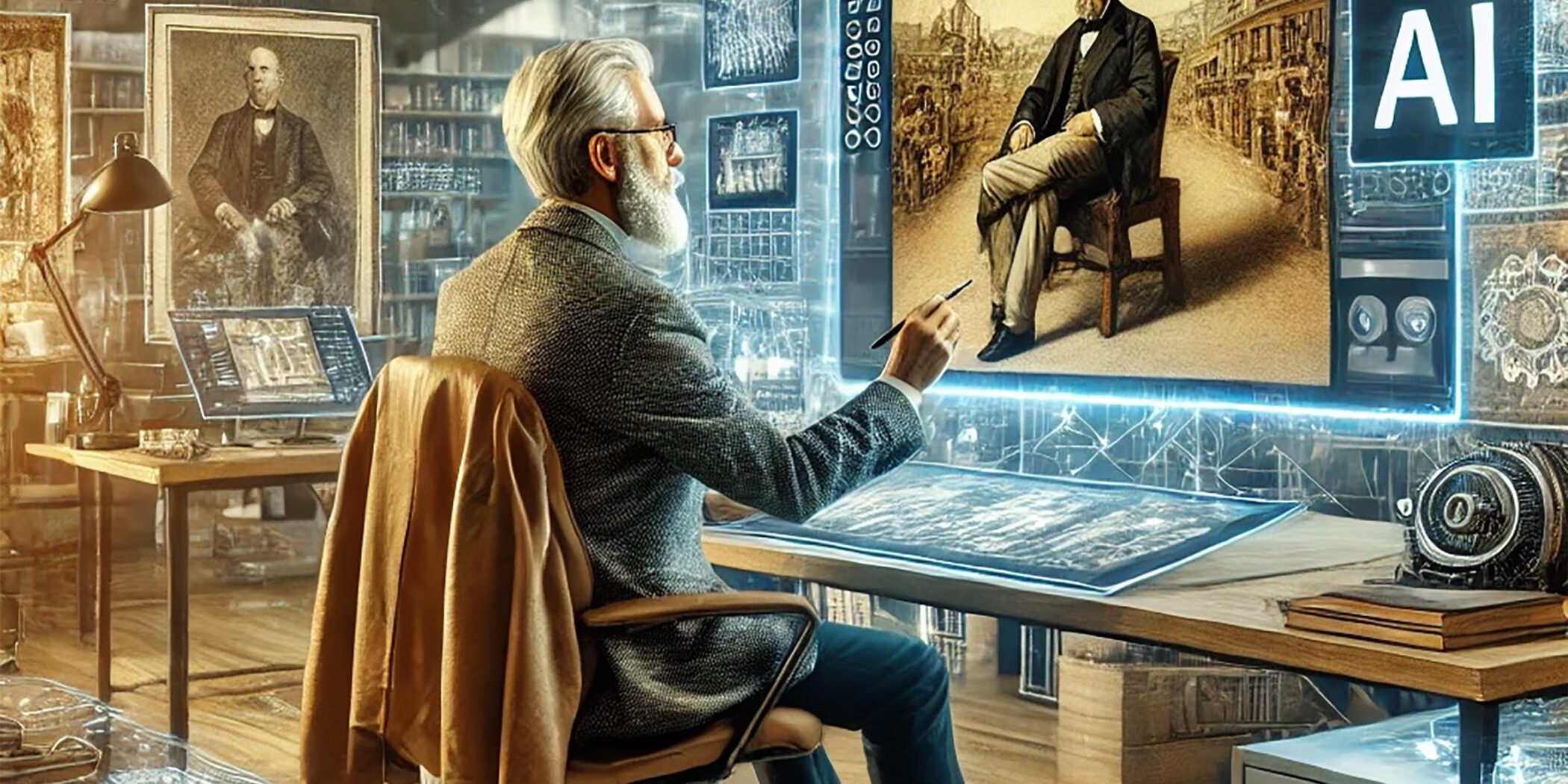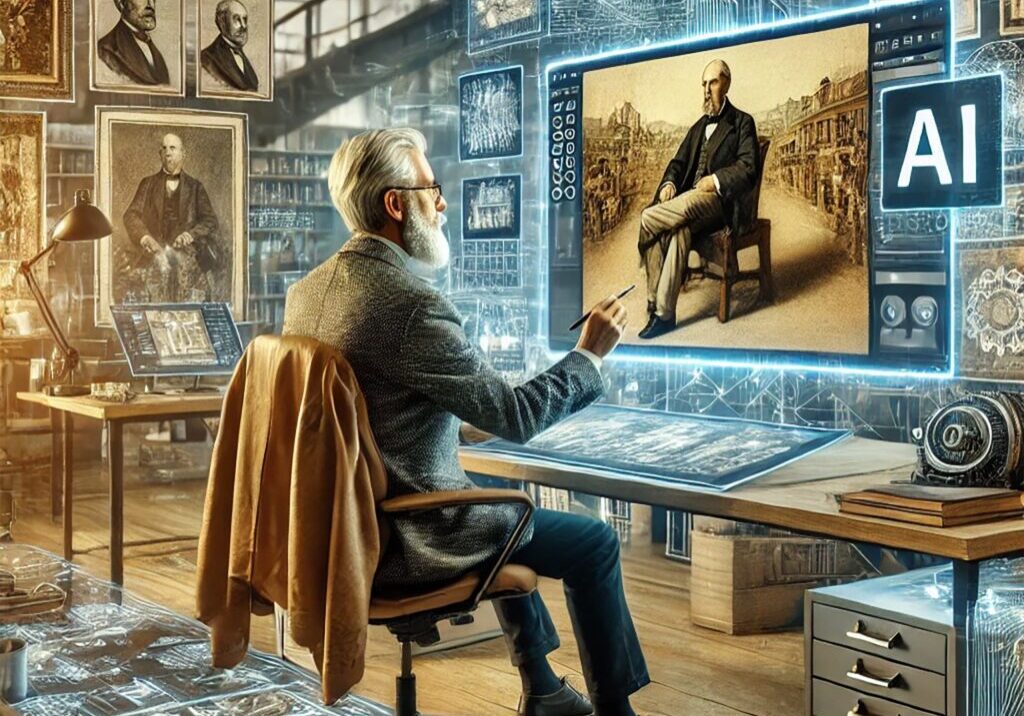
Where the Machines Began: The Industrial Revolution in America
Introduction
Progress often conjures images of speed: the space race, the digital age, the skyline racing upward. But in the 250th Anniversary Mural, the Progress Section begins not with flight, but with friction. The first visual shift in this arc of American momentum is mechanical- iron gears, wooden looms, spinning wheels, waterwheels, anvils. It opens in grit, not glory. Here, in the furnaces of early American innovation, the mural tells a quieter story- one where invention began with repetition, heat, pressure, and hands. This blog explores the symbolism of that opening frame: how the Industrial Revolution laid the groundwork for the modern American identity, how the machinery of labor became the metaphor for invention itself, and why the mural doesn’t romanticize this period- but refuses to forget it.
Industry in the Mural: The Visual Cues of Mechanized Change In the Progress Section, the shift in tone is immediate. The golden light of liberty gives way to colder steel, gray skies, and disciplined motion. The composition includes:
- A textile loom mid-thread, its shuttle frozen in place
- An iron press in profile, bolts and steam valves detailed with precision
- Workers at a forge, one arm raised with a hammer, another guiding molten metal
- A waterwheel in the background, partially obscured by masonry
These aren’t museum pieces- they’re active symbols. The scene doesn’t look backward to commemorate. It looks inward to examine: what did we gain when we mechanized our hands? And what did we leave behind? The Human Form, Reframed by Industry One of the mural’s subtler elements is the posture of the workers. They are not collapsing in exhaustion, nor raising fists in victory. Their bodies are mid-task- absorbed, aware, adapted.
The mural shows the moment when humans first had to match the rhythm of machines, not the other way around. This is a profound shift. For the first time in American history, time became mechanized. Output became measurable. And the individual laborer became part of a larger, often invisible, system. The mural does not critique this. It registers it. And it invites the viewer to ask: how did this transformation shape not just commerce- but consciousness?
Beyond Invention: The Industrial Revolution as Identity American industry did more than build goods. It built a new kind of national identity. From 1790 through the mid-1800s, the rise of textile mills, steam power, canals, and the factory system changed what work meant, where it happened, and who participated.
- Textile towns like Lowell, Massachusetts, employed young women who lived in factory-owned housing • Blacksmithing and toolmaking became precursors to advanced machining
- The Erie Canal, completed in 1825, reshaped the economic geography of the country
All of these were victories of engineering.
But they were also shifts in human rhythm. The mural shows this not through statistics, but through tone- a space in which movement is regimented, but not lifeless. Where invention lives not in the machines, but in the men and women who learned to work beside them. Tensions: Labor, Class, and the Costs of Progress The Industrial Revolution was not purely a story of progress. It was also a story of exploitation, adaptation, and imbalance.
The mural reflects this with subtle tension:
- Shadows cast long over a child’s figure near a loom
- A woman’s hand, gripping thread tightly- knuckles pale
- A man’s posture curved by repetition, not pride
These aren’t exaggerations. They’re inclusions- reminders that every moment of technological evolution carries weight. The Progress Section doesn’t apologize for this history. But it refuses to leave it unexamined. The Machine as Symbol: Why It Begins Here Why does the Progress Section open here? Because before the United States could claim innovation, it had to experience transformation. The machine is more than a tool in this mural.
It’s a metaphor:
- For systems we create that reshape us in return
- For ambition that requires structure
- For the creative tension between repetition and reinvention
The factory isn’t glorified. It’s recognized as the crucible- an environment that both refined and tested the American spirit. Echoes in the Present: Why This Moment Still Matters We live now in the age of automation, digital code, and remote work. But the mural’s return to the forge reminds us that every innovation begins in friction. Every leap forward begins with a measured pace, a repeated action, a moment where labor is real before it becomes conceptual. In honoring this era, the mural is not nostalgic. It’s anchoring the rest of the Progress arc in truth. It says: before we rose, we endured. Before we connected the world, we harnessed a river.
Before we launched rockets, we turned cranks and boiled water and shaped iron by hand. Why It Still Matters The machines of the Industrial Revolution are quiet now. They live in museums, in archives, in re-creations. But their legacy hums in every device we touch, every shipment we track, every digital output we expect on demand. And when we speak of American innovation, we must remember not just what we built- but what built us.
Further Reading / Explore More
As you follow the mural’s Progress arc, watch how this moment echoes in later scenes- aviation, technology, infrastructure. Read our next entry on the Wright Brothers to see how flight inherits the forge.
Related Blog: From Hands to Wings: The Wright Brothers and the Skyward Gaze Mural Link: https://usa250thanniversarymural.com Tags: 250 Mural, Industrial Revolution, American Labor History, Textile Mills, Progress in Art, Civic Symbolism, Factory System, Early American Industry, Innovation Legacy, Public Art and History

